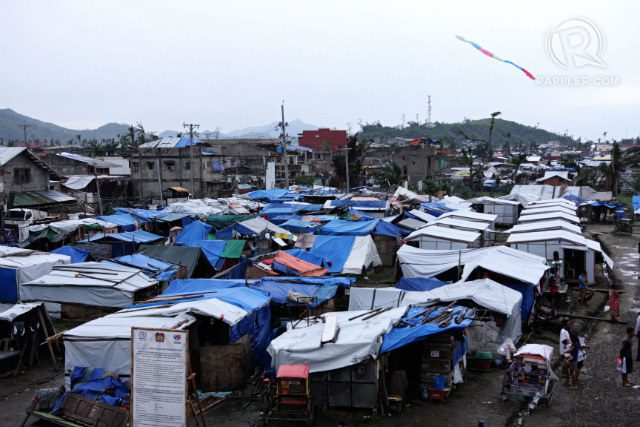SUMMARY
This is AI generated summarization, which may have errors. For context, always refer to the full article.

MANILA, Philippines – Up to 130,000 survivors of Super Typhoon Yolanda (Haiyan) still live in tents nearly 5 months after Yolanda left more than 4.37 million Filipinos homeless, Social Welfare Secretary Dinky Soliman said.
This number, equivalent to around 28,000 families, is more than half the population of Tacloban in Leyte, the city worst hit by Yolanda. It is also twice the number of people in badly hit Palo town in Leyte.
“Ito po ‘yung pinakamalaking hamon na aming nakikita,” Soliman said in a media briefing Thursday, April 3. (This is the biggest challenge we see.)
For Yolanda survivors in tents, she said the government hopes to finish “various forms” of transitional shelters by June. (READ: Gov’t hit for delayed Haiyan shelters)
Soliman said these transitional shelters will meet international standards. She made this promise after the government in January faced criticism over substandard bunkhouses, which serve as transitional shelters. (READ: DPWH didn’t know standard for shelters)
Facing storms again
The work of helping homeless Yolanda survivors, however, doesn’t end with bunkhouses.
Once affected residents move into transitional shelters, they will have to stay there for up to two years. The government plans to finish building permanent, hopefully sturdier houses by 2015.
Until then, they will have to face other storms while in transitional shelters.
Next week alone, for instance, the Philippine government is anticipating a possibly strong typhoon to hit Yolanda-hit communities.
The development chief of the United Nations, Helen Clark, said moving Yolanda survivors into decent shelters remains a “compelling need.”
Most of the homeless Yolanda survivors can be found in Western Visayas, not in Eastern Visayas, as is commonly perceived. – Rappler.com
Add a comment
How does this make you feel?
There are no comments yet. Add your comment to start the conversation.